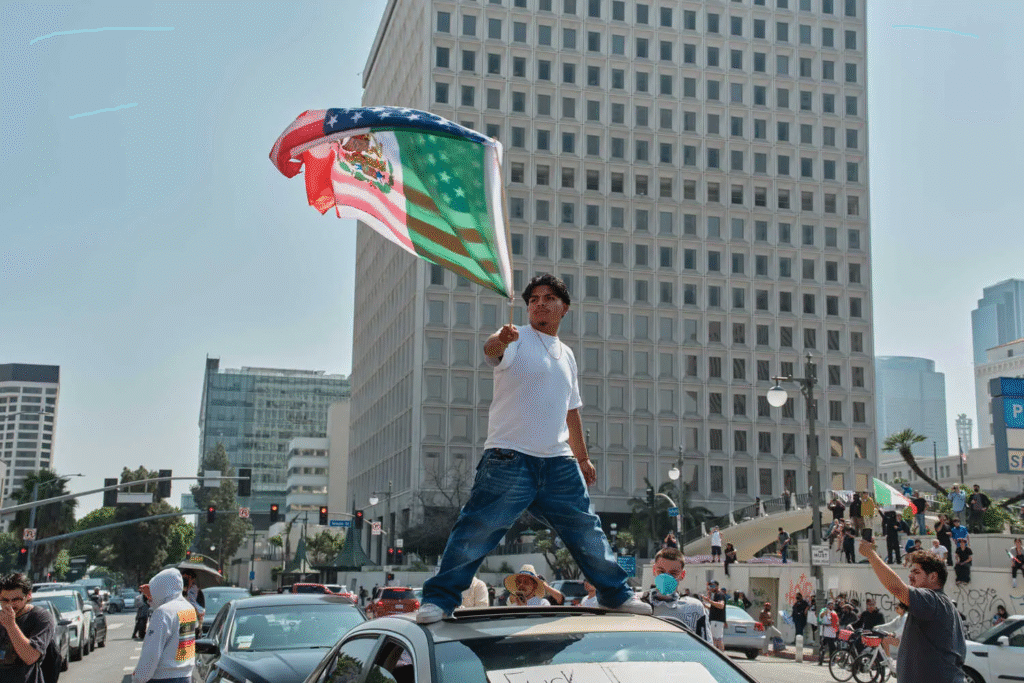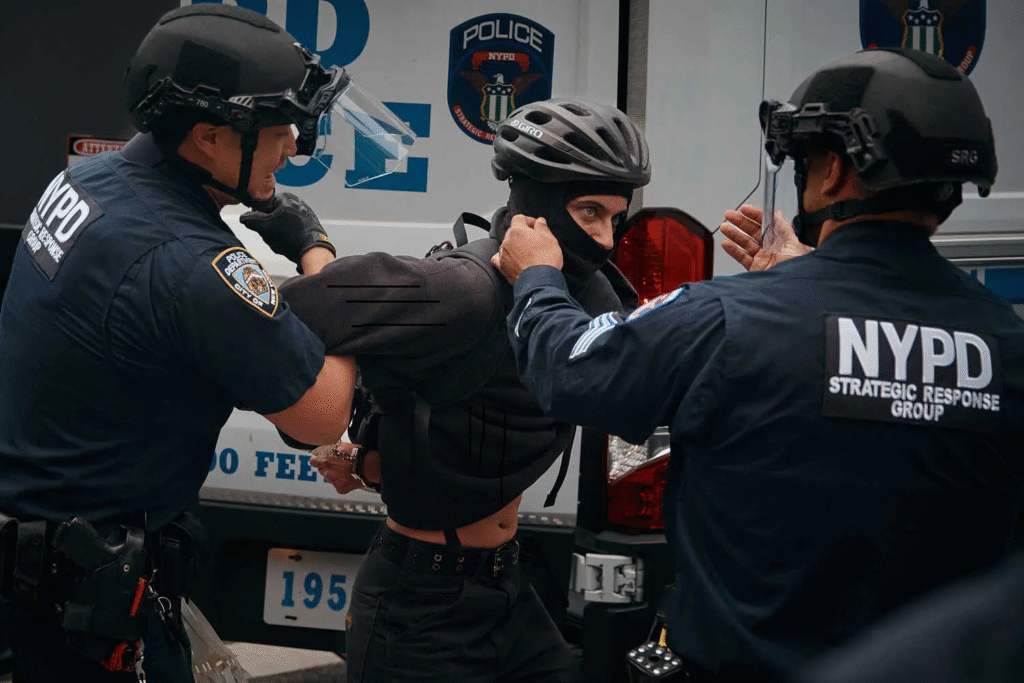Trump sends Marines and additional soldiers to Los Angeles, which exacerbates tensions.
City and state leaders have said that deploying military troops will only make things worse, and large crowds gathered downtown in the evening were met with rows of soldiers and cops.
Following the Trump administration’s commands to more than double the number of military troops stationed in Los Angeles, where there were mostly peaceful protests against President Trump’s deportation roundups during the day, tensions started to increase on Monday night.

At first, the disturbance centered on a tiny area in the center of the city, close to a federal building and City Hall, where police used foam rounds and flash bombs to disperse a mob. As evening neared, police officers and National Guard soldiers in riot gear encircled the federal building. However, the demonstrators then started to disperse, with several of them entering the neighboring Little Tokyo area.
With the Trump administration’s new deployments bringing the number of federal forces to 4,000 National Guard troops and 700 active-duty Marines, the ground conflict resembled the one between senior officials in California and Washington. Given that the demonstrations had been rather small and confined to a few sites, and that Mr. Trump himself had stated that the situation in Los Angeles was “under control,” the escalation was remarkable. However, Mr. Trump has also referred to the protestors as “insurrectionists.”
The arrival of hundreds of National Guard troops, some of which are visible around federal buildings, prompted state and municipal authorities to denounce the federal forces as unnecessary and provocative. Additionally, Gov. Gavin Newsom’s administration filed a lawsuit attempting to prevent Mr. Trump’s original order to deploy 2,000 National Guard troops. Mr. Newsom told The New York Times in an afternoon interview that the soldiers who had been sent over the weekend had little to do, that the Marines were not needed, and that the president was trying to foster “more fear, more anger, and to further divide.”

The Pentagon spokesman said hours later that an additional 2,000 National Guard troops were being activated.
There were worries that the tension may extend to other communities. David Huerta, a union leader, was arrested on Friday and freed on Monday afternoon after posting a $50,000 bail. Demonstrations against the arrest took place nationwide. Hundreds of demonstrators chanted “Abolish ICE” as locals applauded from fire escapes during an evening march through the streets of San Francisco’s Mission District. Over 150 demonstrators were detained in the city the previous night as a result of a violent confrontation.
The mayor of New York, Eric Adams, issued a warning that the police would not accept the type of conflict that had broken out in other places. Since Friday, more than 150 individuals have been detained in Los Angeles. Despite the violence, which was limited, the National Guard was only protecting two federal structures, according to Los Angeles Mayor Karen Bass. “So they need Marines on top of it?” she asked. “I don’t understand that.”
Here is some further information:
Trump’s rhetoric: In labeling the demonstrators “insurrectionists,” Mr. Trump seemed to be embracing a justification that might allow him to deploy active-duty U.S. military troops to handle violent protests under the 1807 Insurrection Act. Videos taken on Sunday show that, for the most part, the protests have been peaceful, and that the National Guard troops have mostly stayed out of the way of the demonstrators.
Marine Deployment: It was unclear on what basis Mr. Trump and the Defense Department sent the Marines, who are based in Twentynine Palms, California, to American streets. With the exception of the rarely utilized Insurrection Act, which the president has not yet invoked, federal law normally prohibits active-duty troops from enforcing domestic law.

Marching in unison: Some of the demonstrators in downtown Los Angeles on Sunday claimed to be first- or second-generation immigrants expressing solidarity with their neighbors or relatives. Numerous family members of the detainees spoke at a news conference on Monday morning, holding photographs of their loved ones and stating that they had been unable to contact them.
Mexican flags: Latin American flags became a symbol during the weekend demonstrations. Trump administration members have portrayed flag wavers as rebels and appeared to believe that they are not citizens of the United States. However, the flag represents pride in one’s origins for many demonstrators who are American citizens.






























